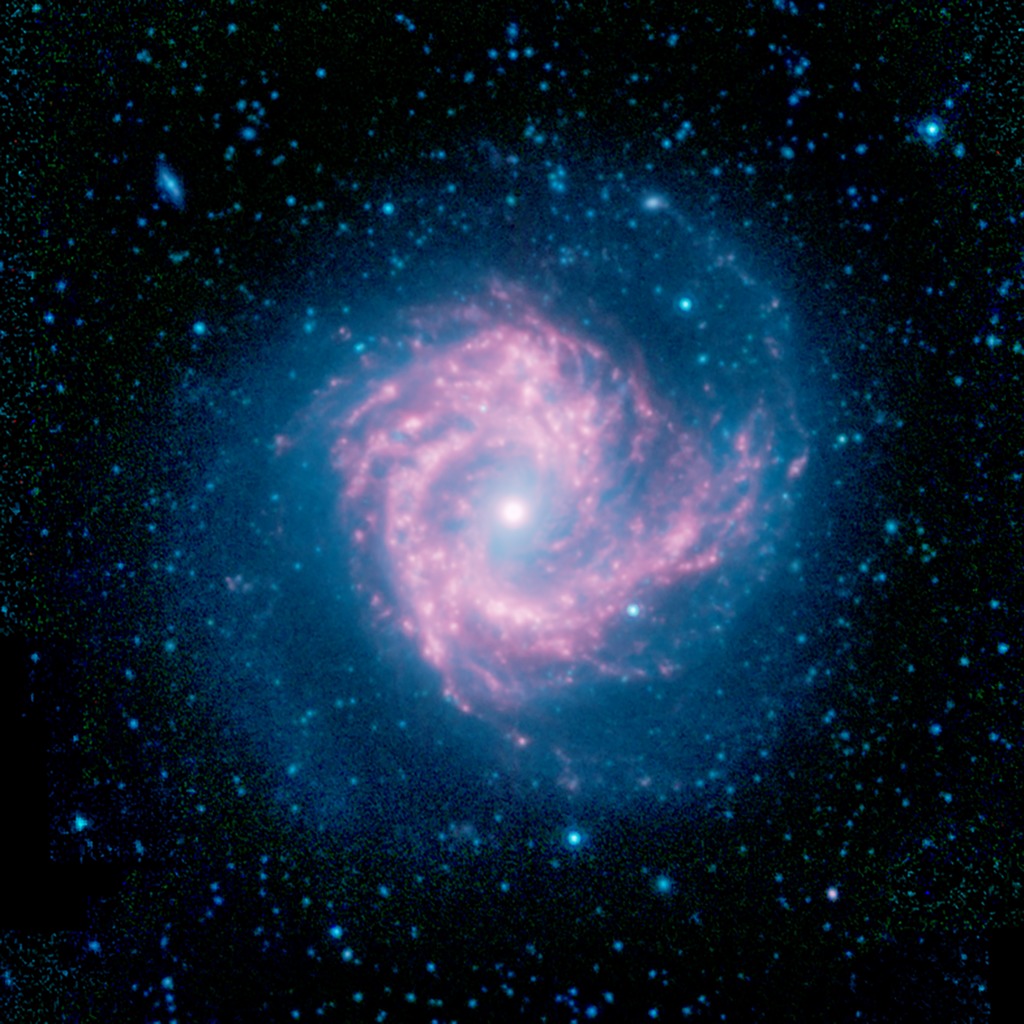
Credit: NASA/JPL-Caltech
Observation • August 24th, 2023 • ssc2023-04
ssc2023-04
Messier 61 (M61), pictured here in infrared light observed by NASA’s Spitzer Space Telescope, is known to astronomers as a “starburst” galaxy due to its prodigious rate of forming new stars. Seen face-on, it provides an excellent view of the characteristic swirl of stars, gas, and dust that characterize barred spiral galaxies.
Infrared light is a powerful tool in studying the structure of spiral galaxies like M61. Starlight is prominent at shorter wavelengths of infrared light, pictured here in blue. It has a stellar bar that runs diagonally through its center, rotated slightly clockwise from vertical. Bars are generally much easier to identify in infrared images than in visible light images.
The red swirls trace the lanes of dust that glow brightly at longer infrared wavelengths. The center of the galaxy is saturated in this image with the bright glow of a dense concentration of stars, but on the periphery the glow takes on a red tinge. This indicates a significant reservoir of dust and gas in the galaxy’s center, which is the location of the ongoing burst of star formation.
At a distance of about 50 million light years, M61 is part of the Virgo cluster of galaxies, named for the constellation in which it is found.
In this image, infrared light at wavelengths of 3.6, 4.5, and 8.0 microns is displayed as blue, green, and red, respectively. The data are from the mission archive of NASA’s Spitzer Space Telescope.
About the Object
- Name
- M61 • NGC 4303
- Type
- Galaxy > Type > Spiral
- Galaxy > Type > Barred
- Galaxy > Activity > Starburst
- Distance
- 50,000,000 Light Years
Color Mapping
| Band | Wavelength | Telescope |
| Infrared | 3.6 µm | Spitzer IRAC |
| Infrared | 4.5 µm | Spitzer IRAC |
| Infrared | 8.0 µm | Spitzer IRAC |
Astrometrics
- Position (J2000)
- RA =12h 21m 54.9s
- Dec = 4° 28' 25.8"
- Field of View
- 7.9 x 7.9 arcminutes
- Orientation
- North is 25.0° right of vertical



